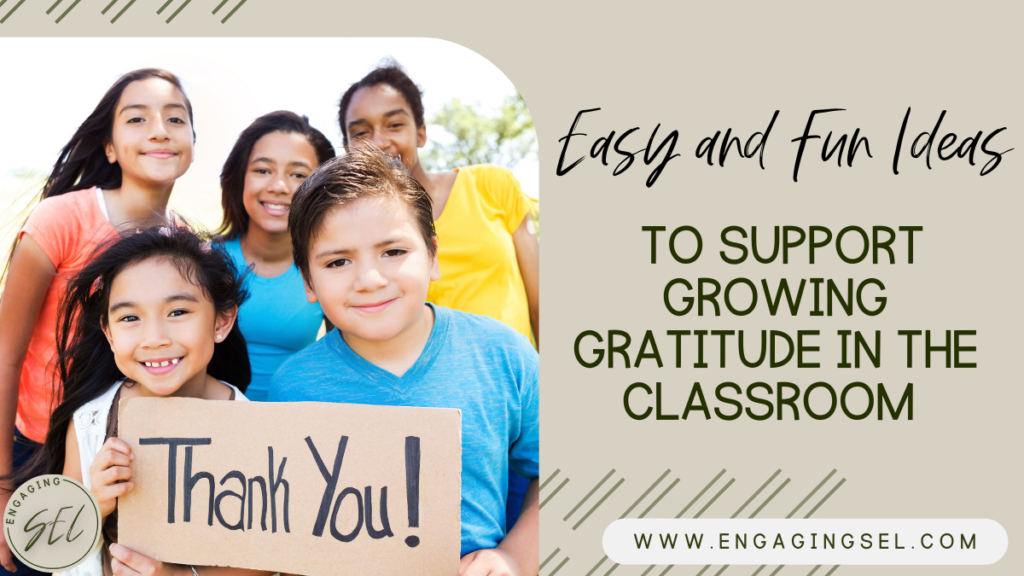
Gratitude has numerous benefits for the classroom environment. Teaching students the concept of gratitude can lead to an increase in positive emotions, and help students recognize the kindness and generosity of others. Focusing on gratitude in the classroom helps support a positive learning environment and fosters a sense of community in the classroom. Creating a culture of appreciation and kindness contributes to the overall personal, social, and emotional development of students. I love finding fun and creative ways to introduce and teach the concept of gratitude to my students. There are so many unique ideas that you can use in your classroom to explore gratitude and kindness in the classroom. Read this blog post to get some ideas that you can do with your students to help them grow their own gratitude.
Gratitude Journals and Writing Prompts
Gratitude journals are so wonderful in the way that they can be used in so many ways to fit whatever your classroom needs. You can incorporate them into your daily routine, or use them for a short time such as a week or a month. Students can use a journal with the prompts already written in, which is great for primary students. Older students can use a blank composition book or notebook for their journal entries. Students can write one thing they are grateful for each day. This activity encourages students to focus on the positive aspects of their lives when they think of people, experiences, or things they are grateful for
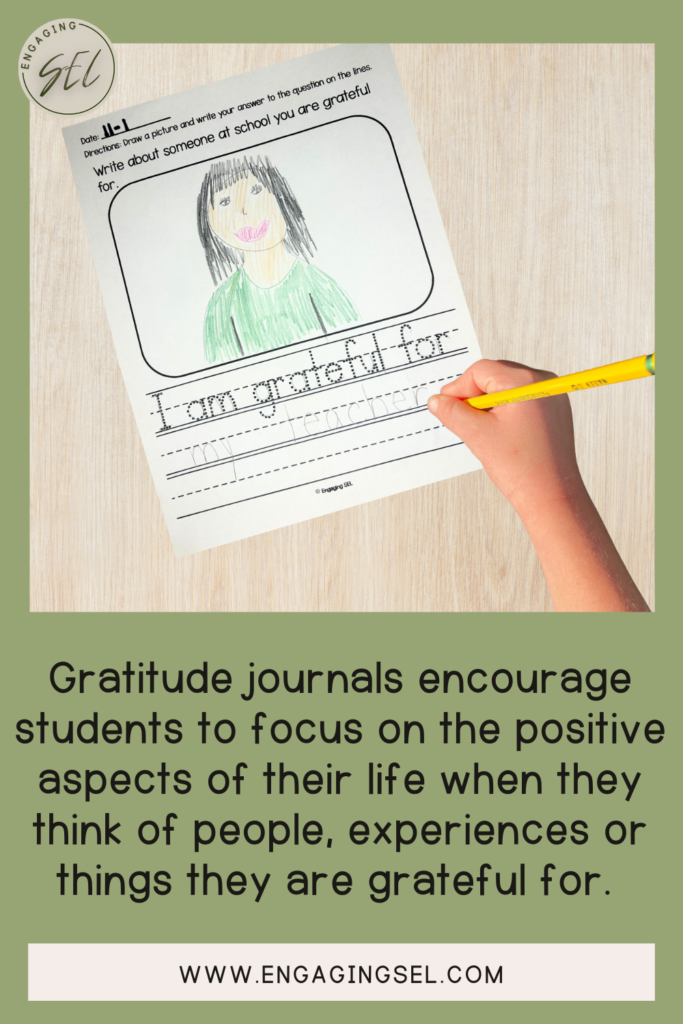
Teachers can give students prompts like my journal prompts here or students can use the same basic “What are you grateful for?” prompt every day. The Calm Classroom has some great journal prompts for older students. For younger students, you can provide a sentence starter with space for a picture. Colorín Colorado has some great tips for gratitude writing prompts for ELLS. This can be done as part of the morning routine and at the end of the day as a reflective exercise or even as part of your writing block. The wonderful thing about journaling is that it can be done in so many ways to fit into your classroom schedule.
Thank-you Notes
Thank you notes are a quick and easy way to recognize all of the hardworking people in your classroom, hallway, building, or in the students’ lives. Students can write thank you notes to teachers, classmates, staff members, or family members. This is an effective way to acknowledge and appreciate the things that other people can do for us. You can work with the students to come up with a list of all the ways that person has helped us. My favorite way to do this is to celebrate the staff in our building who usually don’t get as much recognition like the secretary and custodian. The students are always so excited when we deliver our thank you notes and the people we give them to are so happy. It makes a huge impact on the students.
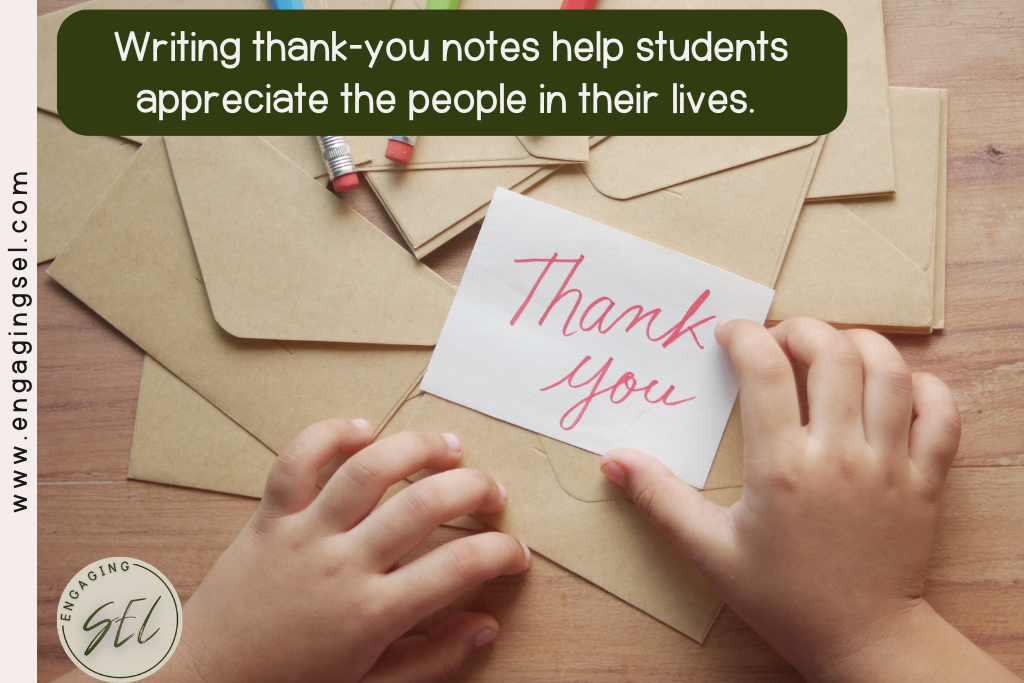
Gratitude Circle Time
During a gratitude circle, students share stories of times that they felt thankful. Teachers can give prompts for students to share such as: Tell me about a time that you were thankful for your mom… It can be left open-ended and students can share one thing they are grateful for each day. This can be done during a morning meeting, closing meeting, or during transitions. Sharing stories of gratitude helps students build their active listening skills as well.
Acts of Kindness
Acts of kindness campaigns can be done with just your classroom or building-wide as part of a spirit week or other event. These campaigns can be done in any number of ways. You can simply keep track of the acts of kindness your students do by making a list or putting post-its on a board. You can create specific tasks that students need to do and cross them off once they are completed. I have even seen some buildings make it into a competition of whose classroom will have the most acts of kindness. Kindness campaigns are a great way to build classroom and school community while focusing on service to others.
Gratitude Art Projects
Students create a visual representation of their thankfulness. Students can create collages, paintings, or drawings showing things that they are thankful for. It is so fun to combine all of the students’ drawings into one big thankfulness quilt or display. You could also team up with the art teacher at your building to create a project with your school to make these projects as well.
Gratitude Alphabet
Dedicate each day to a letter of the alphabet and choose a word associated with thankfulness for that letter. Discuss with students what that word means and add some activities into the day to help students explore that word. Students could even make a craft featuring that word. I love doing this activity with the younger students in the month of November. You can feature one or two letters a day building up to Thanksgiving. It gives students a bigger understanding of what it actually means to be grateful.
Storytelling
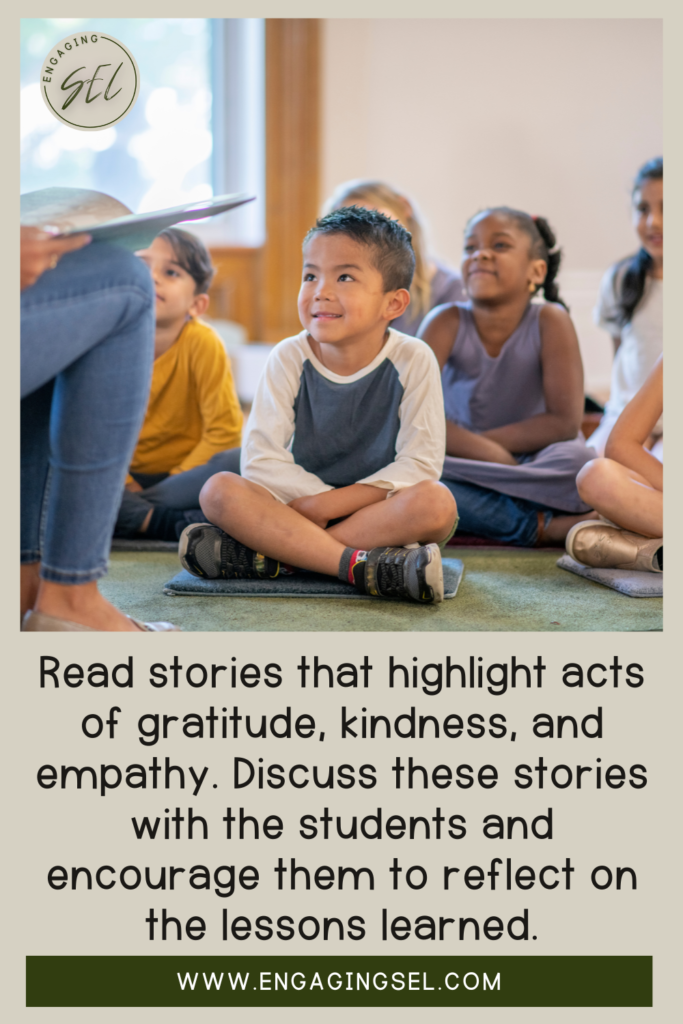
There are so many storybooks that focus on the idea of gratitude and thankfulness that you can share with your students and kids love a good story! My Amazon list has my collection of gratitude storybook recommendations. Read these books as part of an ELA lesson where teachers focus on discussions about the characters’ actions and feelings and make personal connections. Teachers can read the story and have discussions about what happened in the story. Story books are a fantastic tool to introduce a concept to students help them explore the idea and help connect it to their own lives. Pair the storybooks with videos or some of the other activities mentioned in this blog post for a daily lesson about gratitude.
Gratitude Challenges
Gratitude challenges are so fun because you can incorporate them in so many different ways into your classroom and daily routine. They can be as simple or as complex as you would like. You can challenge students to find one thing they are grateful for every day of the month or make it shorter to just a week. You can challenge students to find things they are grateful for in different areas of their lives such as at home, at school, or in nature. Take students around the school and have them make a list of everything they see that they are grateful for, no matter how small. You could even use a calendar with a different prompt each day for students to find something they are grateful for.
Community Involvement
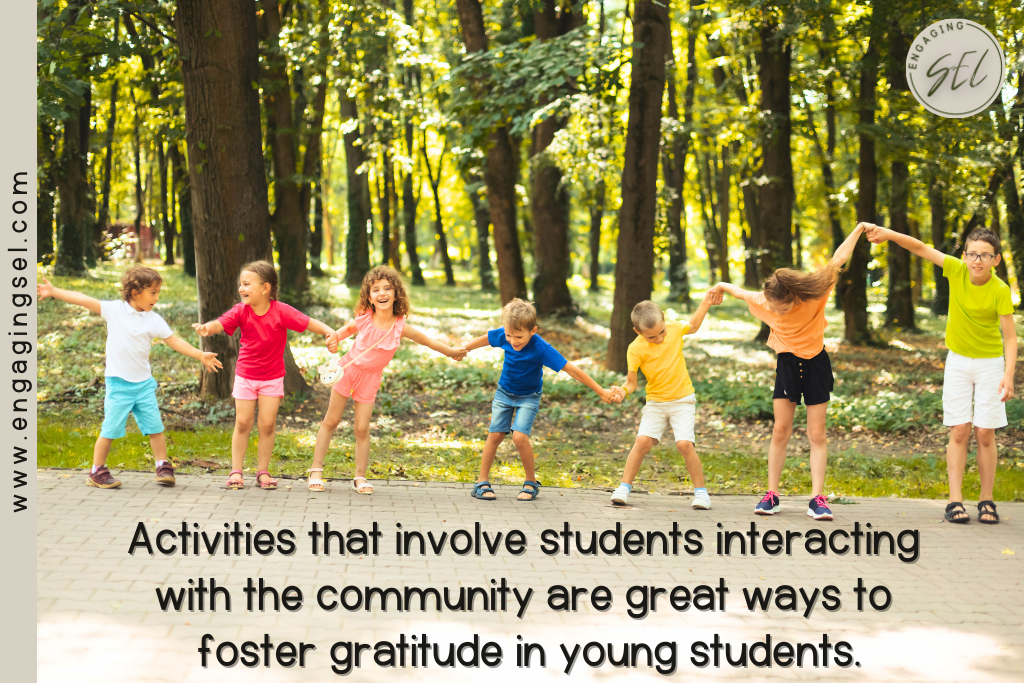
This one might be a little tricker and more time-consuming and also depend on your administrator/building guidelines but I encourage you to reach out to your building administrators and see what opportunities there might be for your class to get involved with the community. Activities that involve students interacting with the community such as visiting a retirement home, cleaning the park, or volunteering at a food bank are great ways to foster gratitude in young students. Allie, from the Classroom Community Copilot, gives some great tips about students getting involved in the community here.
Get Started Growing Gratitude in Your Classroom Today
This blog post gave you a few ideas that you can incorporate into your classroom to help your students understand the concept of gratitude. With Thanksgiving coming up in the month of November, there are so many ways to tie in these activities with the holiday and help students understand exactly what it means to be thankful and grateful. Comment below which activity you are most excited to try with your students!
Mindfully yours,
Alyssa from Engaging SEL


